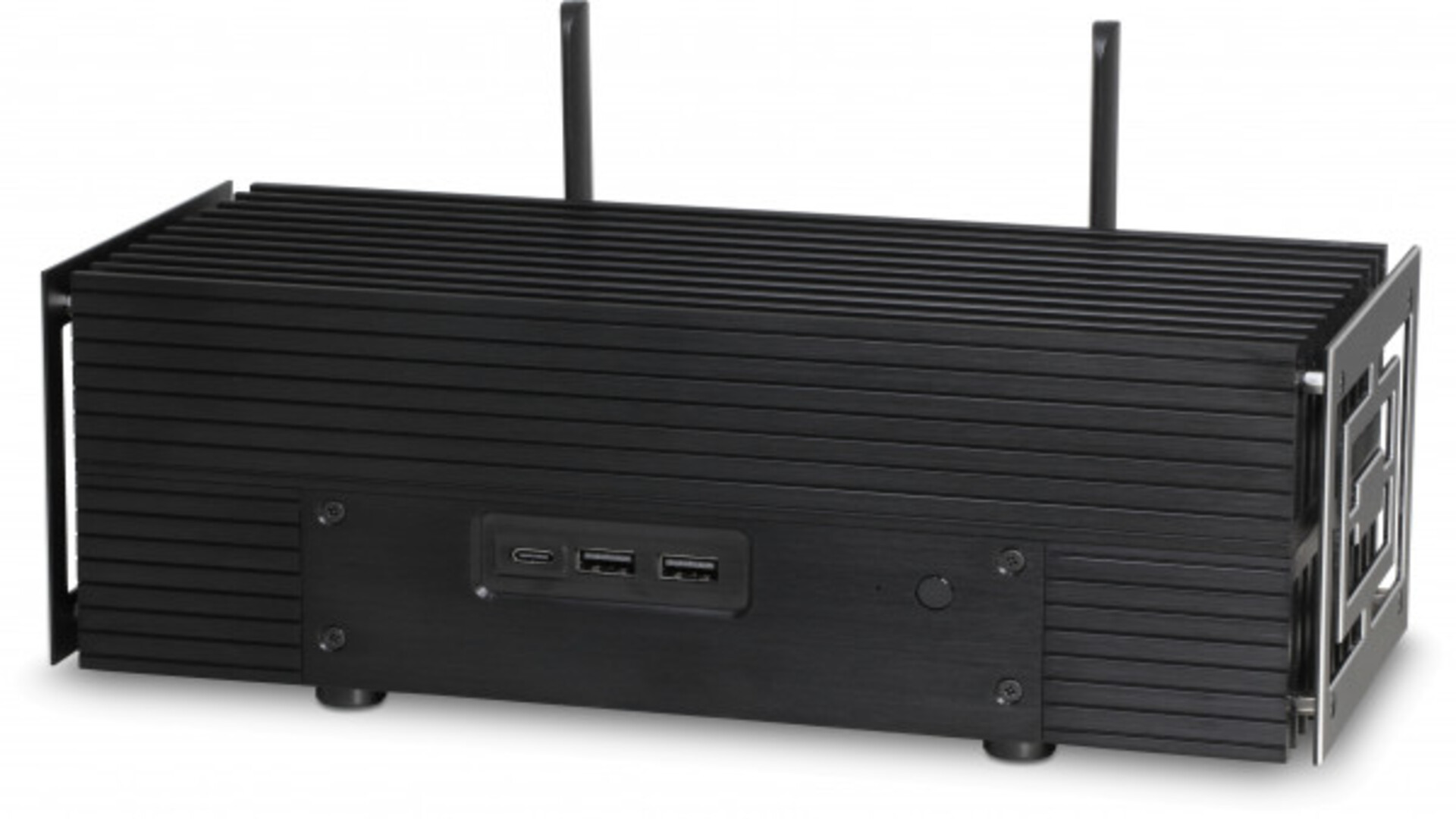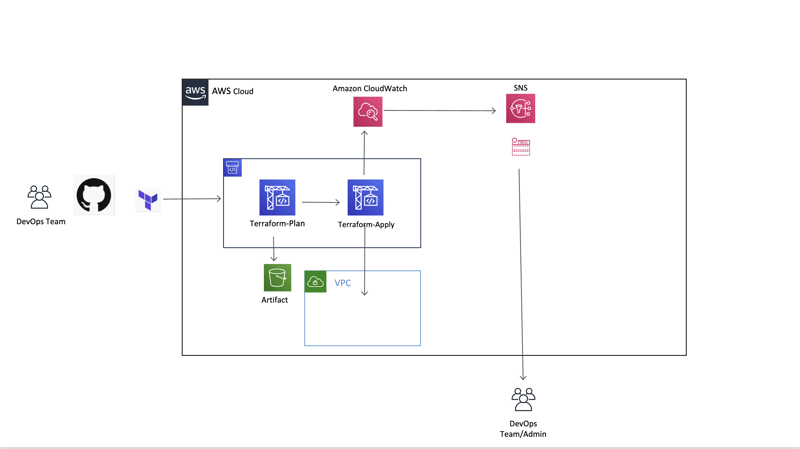"Unlocking Reliability: Testing Neural Networks for Critical Systems"
In an era where artificial intelligence is revolutionizing industries, the reliability of neural networks in critical systems has never been more paramount. Are you grappling with the daunting task of ensuring that your AI models perform flawlessly under pressure? You’re not alone. Many engineers and developers face the challenge of testing these complex algorithms to guarantee their robustness and dependability—especially when lives or significant resources are at stake. This blog post delves into the intricate world of neural network reliability testing, illuminating its vital importance while addressing common hurdles faced during evaluation processes. What if there were proven strategies to enhance your testing protocols? Imagine being equipped with best practices that can transform how you assess performance, alongside cutting-edge tools designed specifically for rigorous evaluations. Through compelling case studies showcasing success stories in this field, we’ll explore actionable insights that empower you to unlock unparalleled reliability in your systems. Join us on this journey as we unravel essential techniques and innovative approaches to ensure your neural networks stand resilient against any challenge they may encounter! Understanding Neural Networks in Critical Systems Neural networks play a pivotal role in critical systems, where reliability and safety are paramount. The paper "rbt4dnn: Requirements-based Testing of Neural Networks" emphasizes the necessity of rigorous testing for deep neural networks (DNNs) to uncover faults that could jeopardize system integrity. By utilizing natural language requirements, this method generates comprehensive test suites aimed at enhancing robustness against failures. Challenges arise from translating informal specifications into actionable tests; however, leveraging generative models facilitates effective fault detection and fine-tuning pre-trained models. This systematic approach incorporates glossary terms and semantic feature spaces to ensure clarity and precision during evaluation. Key Aspects of Requirements-Based Testing The methodology outlined includes innovative techniques related to image prediction tasks using generative models like rbt4dnn, focusing on evaluating image quality across diverse datasets. Such evaluations highlight the effectiveness of requirements-based testing by comparing realism and diversity metrics among different data inputs. Additionally, advancements in machine learning applications within robotics, automation, computer vision, and natural language processing underscore the growing importance of reliable DNNs in various sectors including autonomous vehicles and smart technologies. By prioritizing energy efficiency alongside performance accuracy through Machine Learning models such as Neural Circuit Policies (NCPs), researchers aim to align technological advancements with sustainability goals—ultimately fostering safer critical systems powered by intelligent algorithms. Importance of Reliability Testing Reliability testing is crucial for ensuring that deep neural networks (DNNs) perform consistently and safely in critical systems. As DNNs are increasingly integrated into applications such as autonomous vehicles, healthcare diagnostics, and robotics, the potential consequences of failures can be severe. The method proposed in "rbt4dnn" emphasizes generating test suites from natural language requirements to uncover faults effectively. This approach not only addresses challenges related to translating informal specifications but also leverages generative models for enhanced fault detection. By systematically evaluating image quality and diversity across datasets, reliability testing ensures robustness against unexpected inputs or scenarios. Enhancing System Robustness The systematic approach outlined in the paper highlights the importance of aligning testing methodologies with real-world operational contexts. By utilizing semantic feature spaces and glossary terms specific to application domains, developers can create more relevant tests that reflect actual usage conditions. Furthermore, employing advanced techniques like fine-tuning pre-trained models allows for improved adaptability and performance under varying circumstances—ultimately leading to safer deployment of DNNs in mission-critical environments where reliability cannot be compromised.# Common Challenges in Testing Neural Networks Testing neural networks, particularly deep neural networks (DNNs), presents several unique challenges that can hinder the reliability and safety of critical systems. One significant challenge is translating informal requirements into formal test cases. This translation process often leads to ambiguity, making it difficult to ensure comprehensive coverage during testing. Additionally, leveraging generative models for fault detection poses its own set of difficulties; while these models can identify potential issues, they require

In an era where artificial intelligence is revolutionizing industries, the reliability of neural networks in critical systems has never been more paramount. Are you grappling with the daunting task of ensuring that your AI models perform flawlessly under pressure? You’re not alone. Many engineers and developers face the challenge of testing these complex algorithms to guarantee their robustness and dependability—especially when lives or significant resources are at stake. This blog post delves into the intricate world of neural network reliability testing, illuminating its vital importance while addressing common hurdles faced during evaluation processes. What if there were proven strategies to enhance your testing protocols? Imagine being equipped with best practices that can transform how you assess performance, alongside cutting-edge tools designed specifically for rigorous evaluations. Through compelling case studies showcasing success stories in this field, we’ll explore actionable insights that empower you to unlock unparalleled reliability in your systems. Join us on this journey as we unravel essential techniques and innovative approaches to ensure your neural networks stand resilient against any challenge they may encounter!
Understanding Neural Networks in Critical Systems
Neural networks play a pivotal role in critical systems, where reliability and safety are paramount. The paper "rbt4dnn: Requirements-based Testing of Neural Networks" emphasizes the necessity of rigorous testing for deep neural networks (DNNs) to uncover faults that could jeopardize system integrity. By utilizing natural language requirements, this method generates comprehensive test suites aimed at enhancing robustness against failures. Challenges arise from translating informal specifications into actionable tests; however, leveraging generative models facilitates effective fault detection and fine-tuning pre-trained models. This systematic approach incorporates glossary terms and semantic feature spaces to ensure clarity and precision during evaluation.
Key Aspects of Requirements-Based Testing
The methodology outlined includes innovative techniques related to image prediction tasks using generative models like rbt4dnn, focusing on evaluating image quality across diverse datasets. Such evaluations highlight the effectiveness of requirements-based testing by comparing realism and diversity metrics among different data inputs. Additionally, advancements in machine learning applications within robotics, automation, computer vision, and natural language processing underscore the growing importance of reliable DNNs in various sectors including autonomous vehicles and smart technologies.
By prioritizing energy efficiency alongside performance accuracy through Machine Learning models such as Neural Circuit Policies (NCPs), researchers aim to align technological advancements with sustainability goals—ultimately fostering safer critical systems powered by intelligent algorithms.
Importance of Reliability Testing
Reliability testing is crucial for ensuring that deep neural networks (DNNs) perform consistently and safely in critical systems. As DNNs are increasingly integrated into applications such as autonomous vehicles, healthcare diagnostics, and robotics, the potential consequences of failures can be severe. The method proposed in "rbt4dnn" emphasizes generating test suites from natural language requirements to uncover faults effectively. This approach not only addresses challenges related to translating informal specifications but also leverages generative models for enhanced fault detection. By systematically evaluating image quality and diversity across datasets, reliability testing ensures robustness against unexpected inputs or scenarios.
Enhancing System Robustness
The systematic approach outlined in the paper highlights the importance of aligning testing methodologies with real-world operational contexts. By utilizing semantic feature spaces and glossary terms specific to application domains, developers can create more relevant tests that reflect actual usage conditions. Furthermore, employing advanced techniques like fine-tuning pre-trained models allows for improved adaptability and performance under varying circumstances—ultimately leading to safer deployment of DNNs in mission-critical environments where reliability cannot be compromised.# Common Challenges in Testing Neural Networks
Testing neural networks, particularly deep neural networks (DNNs), presents several unique challenges that can hinder the reliability and safety of critical systems. One significant challenge is translating informal requirements into formal test cases. This translation process often leads to ambiguity, making it difficult to ensure comprehensive coverage during testing. Additionally, leveraging generative models for fault detection poses its own set of difficulties; while these models can identify potential issues, they require fine-tuning and extensive training data to be effective.
Another common hurdle is evaluating image quality and realism when using datasets like ImageNet for prediction tasks. The diversity within these datasets complicates the assessment of model performance across various scenarios. Furthermore, ensuring robustness against adversarial attacks remains a pressing concern as DNNs are susceptible to subtle input manipulations that can lead to incorrect outputs.
Addressing the Challenges
To tackle these challenges effectively, employing a systematic approach such as requirements-based testing is essential. This method utilizes glossary terms and semantic feature spaces to enhance clarity in requirement definitions while generating targeted test suites aimed at revealing faults efficiently. By focusing on recent advancements in machine learning techniques—such as Liquid Time-Constant Networks (LTCs) or Neural Circuit Policies (NCPs)—researchers are paving the way toward more reliable DNN applications across diverse fields including robotics and autonomous vehicles.
Best Practices for Effective Testing
Effective testing of deep neural networks (DNNs) is crucial for ensuring reliability and safety in critical systems. One best practice involves translating natural language requirements into structured test cases, which helps identify potential faults early in the development process. Utilizing generative models can enhance fault detection by simulating various scenarios that a DNN might encounter in real-world applications. Fine-tuning pre-trained models based on specific requirements ensures that the system remains robust against diverse inputs.
Additionally, employing a systematic approach to requirements-based testing allows developers to leverage glossary terms and semantic feature spaces effectively. This method not only improves clarity but also facilitates better communication among team members regarding expectations and outcomes. Regularly evaluating image quality, realism, and diversity across datasets further enhances the robustness of DNNs by providing insights into their performance under different conditions.
Key Techniques
Incorporating automated tools for generating test suites can streamline the testing process while maintaining high accuracy levels. Furthermore, continuous integration practices should be adopted to ensure ongoing evaluation as new features are developed or existing ones modified. By integrating these best practices into your workflow, you will significantly improve the reliability of neural networks within critical systems.
Tools and Techniques for Evaluation
Evaluating deep neural networks (DNNs) is crucial for ensuring their reliability, especially in critical systems. One effective tool discussed in the literature is the rbt4dnn framework, which utilizes natural language requirements to generate comprehensive test suites aimed at identifying faults within DNNs. This method emphasizes translating informal requirements into structured testing protocols, leveraging generative models to enhance fault detection capabilities. Additionally, fine-tuning pre-trained models allows for improved performance across various tasks such as image generation and prediction accuracy.
Generative Models and Their Applications
Generative models play a pivotal role in evaluating DNNs by facilitating tasks like ImageNet predictions while assessing image quality and diversity across datasets. The systematic approach of using glossary terms alongside semantic feature spaces enhances understanding during evaluation processes. Furthermore, employing Machine Learning techniques such as Neural Circuit Policies (NCPs) can significantly improve energy efficiency assessments in radio access networks compared to traditional methods like LSTM. By integrating these advanced tools and techniques into the evaluation process, developers can ensure that DNN applications meet both performance standards and sustainability goals effectively.
Case Studies: Success Stories in Reliability
In the realm of reliability testing for deep neural networks (DNNs), several case studies illustrate successful implementations that enhance system robustness. One notable example is the application of requirements-based testing, as discussed in "rbt4dnn." This method effectively utilizes natural language requirements to generate comprehensive test suites aimed at uncovering faults within DNNs. By leveraging generative models, researchers have demonstrated significant improvements in fault detection capabilities, particularly when applied to complex tasks such as image classification and autonomous vehicle navigation.
Key Insights from Successful Implementations
Another success story involves energy-efficient machine learning models like Neural Circuit Policies (NCPs) used for estimating energy consumption in radio access networks. Compared to traditional LSTM models, NCPs not only provide more accurate predictions but also exhibit lower computational overhead and enhanced stability. These advancements align with sustainability goals by optimizing resource usage while maintaining performance standards.
Moreover, the exploration of smart contract upgradeability on blockchain platforms highlights how adaptability can improve software quality attributes significantly. By employing various upgrade methods categorized by complexity and security considerations, developers have successfully navigated challenges associated with decentralized systems' governance and usability issues. Collectively, these case studies underscore the importance of systematic approaches in achieving reliability across diverse technological landscapes.
In conclusion, ensuring the reliability of neural networks in critical systems is paramount for their successful deployment and operation. As we explored, understanding the intricacies of these networks and recognizing the importance of rigorous testing can significantly mitigate risks associated with failures. The challenges inherent in testing such complex models necessitate a strategic approach that incorporates best practices tailored to specific applications. Utilizing advanced tools and techniques not only enhances evaluation accuracy but also streamlines the overall testing process. Moreover, real-world case studies demonstrate that effective reliability measures lead to successful outcomes, reinforcing the value of thorough validation protocols. By prioritizing reliability testing, organizations can unlock the full potential of neural networks while safeguarding against unforeseen consequences in high-stakes environments.
FAQs on "Unlocking Reliability: Testing Neural Networks for Critical Systems"
1. What are neural networks, and why are they important in critical systems?
Neural networks are computational models inspired by the human brain that can learn from data to perform tasks such as classification, regression, and pattern recognition. In critical systems—such as healthcare, autonomous vehicles, and finance—they play a vital role in decision-making processes where accuracy and reliability are paramount.
2. Why is reliability testing essential for neural networks used in critical applications?
Reliability testing ensures that neural networks function correctly under various conditions and inputs. This is crucial because failures or inaccuracies can lead to severe consequences in critical applications, including safety risks or financial losses. Reliable performance builds trust among users and stakeholders.
3. What common challenges do developers face when testing neural networks?
Developers often encounter several challenges during the testing of neural networks, including: - Data Quality: Ensuring high-quality training data that represents real-world scenarios. - Model Complexity: The intricate nature of deep learning models makes it difficult to predict their behavior. - Overfitting: Models may perform well on training data but poorly on unseen data. - Interpretability: Understanding how decisions are made by the model can be challenging.
4. What best practices should be followed for effective testing of neural networks?
To ensure effective testing of neural networks, consider these best practices: - Use diverse datasets that cover a wide range of scenarios. - Implement cross-validation techniques to assess model performance accurately. - Regularly update models with new data to maintain relevance over time. - Conduct stress tests to evaluate system behavior under extreme conditions.
5. What tools and techniques can be utilized for evaluating the reliability of neural networks?
Several tools and techniques aid in evaluating the reliability of neural networks: - Testing Frameworks like TensorFlow Extended (TFX) provide pipelines for deploying machine learning workflows reliably. - Performance Metrics, such as precision, recall, F1 score, etc., help quantify model effectiveness. - Tools like LIME (Local Interpretable Model-Agnostic Explanations) enhance interpretability by explaining individual predictions made by complex models.




































































































































































![[The AI Show Episode 142]: ChatGPT’s New Image Generator, Studio Ghibli Craze and Backlash, Gemini 2.5, OpenAI Academy, 4o Updates, Vibe Marketing & xAI Acquires X](https://www.marketingaiinstitute.com/hubfs/ep%20142%20cover.png)


































































































































![From drop-out to software architect with Jason Lengstorf [Podcast #167]](https://cdn.hashnode.com/res/hashnode/image/upload/v1743796461357/f3d19cd7-e6f5-4d7c-8bfc-eb974bc8da68.png?#)















































































































(1).jpg?width=1920&height=1920&fit=bounds&quality=80&format=jpg&auto=webp#)





























_NicoElNino_Alamy.png?#)
.webp?#)
.webp?#)





































































































![New iOS 19 Leak Allegedly Reveals Updated Icons, Floating Tab Bar, More [Video]](https://www.iclarified.com/images/news/96958/96958/96958-640.jpg)

![Apple to Source More iPhones From India to Offset China Tariff Costs [Report]](https://www.iclarified.com/images/news/96954/96954/96954-640.jpg)
![Blackmagic Design Unveils DaVinci Resolve 20 With Over 100 New Features and AI Tools [Video]](https://www.iclarified.com/images/news/96951/96951/96951-640.jpg)

































































































































